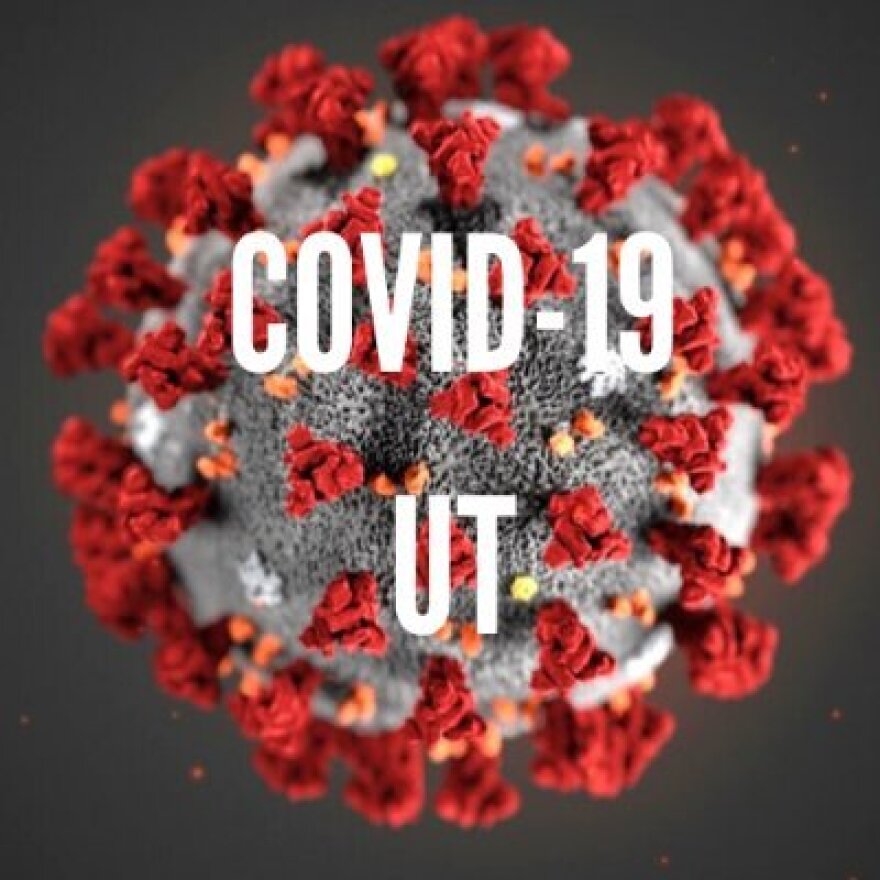The Summit County Health Board, in their regular meeting Monday, heard about the Covid-19 surge in Utah from the perspective of an Intermountain Health Care administrator, who said the case counts are “beyond alarming.”
The Health Board led off their electronic meeting with comments from Dr. Paul Krakovitz, who is Vice-President and Chief Medical Officer of Specialty-Based Cases at IHC. He also sits on the state’s standard of care committee for the pandemic.
And he’s a three-year resident of Park City.
He told the Board that the spike in Covid cases is extremely serious.
“We are not at a crisis in our hospitals, meaning they’re still getting the same care that we always give. But if the demand keeps outstripping the supply of what we can provide in our hospitals, that’s gonna change.”
He said that they are up to 93 percent occupancy for the ICU beds in Intermountain Health Care’s Covid hospitals. Krakovitz said there are five such facilities in the state, not including the Park City Hospital.
The high occupancy number also means that hospital service providers are challenged.
“As the Covid increases in our community, the amount of people who we have to help take care of patients, our nurses, decreases. Their family members are getting sick, and they also might be picking it up within the community. So as the demand goes up, our own ability starts to go down. Now we have plans to mitigate that. We’re bringing in agency nurses. We’re doing all kinds of things to make sure that we are able to continue to provide the best care we can. However, we start worrying about a percentage when it gets above 85 percent in our ICU’s. That’s when we really start to get nervous about our supply. We are now in the 90’s at Intermountain.”
He said there are a number of contingency measures they can follow to shift hospital resources. When they’re admitting non-Covid patients, they can spread them out over a number of days. They can shift patients between hospitals, or between hospital systems. And rooms within facilities can be converted to ICU’s.
The last step would be crisis contingency care.
“And that’s when we have to change the way we take care of patients. Right, so that could mean that we take care of a patient who had a heart attack in a different way than we do normally. We are not at crisis standards of care. So we are not taking care of patients in a different way. We do not want to get there, though.”
In answer to a question, he said there is a lag time between case surges and hospitalizations, depending on the age group.
“If the age group that is showing a higher percentage of positivity is at—let’s just make a cut-off of 65 and above—we’ll start seeing an increase in the hospitals, usually, about two weeks later. What we’re noticing with the younger age groups is that that bumps out to maybe 4 to 6 weeks. So it takes a while for that to spread into the older age group, or to those with co-morbidities to come into the hospital. So the numbers we’re seeing now, we’ll continue to see rises in our hospital, most likely for the next month to six weeks from that. And it’s why it’s so important that we get our numbers down, now.”
Dr. Krakovitz said their major concern is the young population from 18 to 35. He said they are what he called “core spreaders” and are often asymptomatic.
He had four important pieces of advice—wear a mask; maintain social distancing; wash your hands; and when necessary business of the day is done, go home.
The doctor said citizens should be wary of gatherings.
“Social gatherings, or family gatherings are a social spreading. Cause what happens is that you don’t know what somebody in your larger family or friends has. When we’re at 18 percent positivity rate, there’s about a one in five, one in six percent chance that someone’s asymptomatic who you’re sitting there talking to. So it’s important that we stick to our nuclear family, meaning those people who are under your roof is when you take your mask off.”
County Health Director Rich Bullough said he’s still getting e-mails from people claiming that hospitals, far from being pressured, are laying off clinicians.
Dr. Krakovitz said that’s absolutely false.





